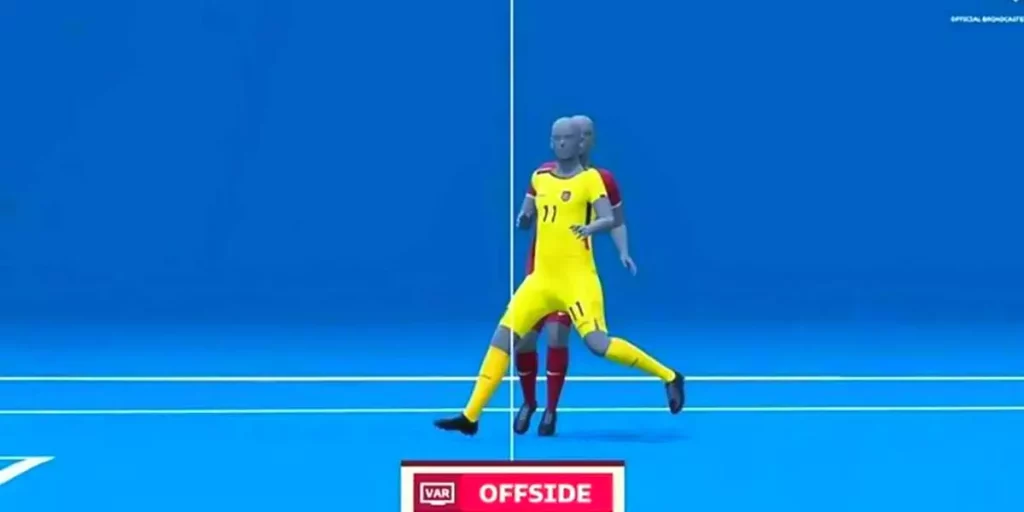To improve player performance and reduce injuries, the Washington Football Team recently declared that it would use AI. To monitor player movements and notify coaches of possible fatigue and injuries, the team placed AI equipped cameras at its home stadium.
It is one-of-its-kind that an experienced team in Washington is using this revolutionary technology. Football, as we perceive it, may change due to AI-powered cameras, which is also evident in Virginia sports betting these days.
In this article, we’ll discuss the benefits of employing AI-powered cameras for enhanced player performance as well its importance for sports broadcasting.
The Advantages of AI-Powered Cameras for Players
AI-enabled cameras have transformed the way athletes and teams monitor player performance in real time in today's rapidly developing sports industry. Let’s now take a closer look at their advantages for players:
Real-Time Feedback
In sports, real-time input to players is a major advantage of integrating AI-powered cameras to monitor practice and games. Cameras driven by artificial intelligence can record an athlete in action.
This information can be used by coaches and trainers to provide instantaneous feedback to players, allowing them to adapt their technique or training plan quickly. An athlete’s performance can be greatly enhanced by this kind of immediate feedback, which helps them see and solve errors as they happen.
Reduced Risk of Injury
Using AI-powered cameras might help reduce the prevalence of sports-related injuries. These cameras can record an athlete in action, providing insight into where they could be vulnerable to damage. Coaches may use this information to make their training conditions less dangerous for their participants.

Better Performance Analysis
AI-powered cameras can record a player's every move and provide a plethora of data for trainers and coaches to analyze. Artificial intelligence-enabled cameras, for instance, may record and evaluate an athlete’s form. With this information, coaches and trainers can focus on specific areas of improvement for their athletes.
Athletes can better modify their training by evaluating performance data to identify their strengths as well as the potential for growth.
Individualized Training Programs
AI-powered cameras may provide coaches and trainers with an array of data regarding a player’s performance, enabling them to develop customized training programs. Athletes must make changes to their diet, nutrition, and training regimens to improve their performance.
Individualized training programs may help athletes get better results faster. When a training regimen caters to an athlete’s unique needs, they are more likely to reach their maximum potential and perform better.
Improved Methods of Scouting and Recruiting
AI-based cameras can potentially be used to improve scouting and recruitment. This technology can help coaches and scouts in finding promising athletes and gauge how they perform, allowing for more calculated decisions about who to bring into the fold. This has the potential to improve team performance and recruitment efforts.
AI-Driven Sports Broadcasting: The Importance of the Camera
To stream and broadcast live sports events without the assistance of field operators or crew is what is meant by the phrase “automated sports broadcasting”.
Automated sports broadcasting depends on cameras placed on the field that autonomously provide a feed to be shown on TV or a streaming site, as opposed to professional sports broadcasting, which requires an army of humans to run the camera and accompanying technologies.
These devices are completely autonomous and can function dependably day or night, regardless of the weather. These gadgets are often deployed to webcast inexpensive sports events that might otherwise be unrecorded.
Coaches and team management may use AI to assess player and team performance and analyze the strategies of other teams, while parents, friends, and fans can watch amateur matches from the comfort of their homes, thanks to live streaming.
Match recordings can be analyzed with the use of a video analysis platform built with AI algorithms to reveal information like shot charts, heat map visualizations, and in-depth player, team, and game data.
The cameras in an automated sports broadcasting system serve primarily two purposes:
- Live broadcasting of matches through streaming services.
- Offering sports-related visual content for analysis and processing.
The rise of automated sports broadcasting is irrevocable. The future of embedded vision is bright in this market, as all of these devices require AI-powered cameras.
In a Nutshell
There are a lot of ways in which AI-enabled cameras might improve sports practice and competition. Technology such as real-time feedback and individualized training programs are revolutionizing the way athletes prepare for competition.
More sophisticated applications of this technology in sports performance and training will probably develop as the sports industry in Washington develops further.
Follow us on our social networks and keep up with everything in the Metaverse!
Twitter Linkedin Facebook Telegram Instagram Google News